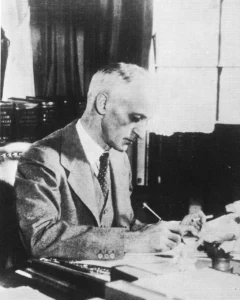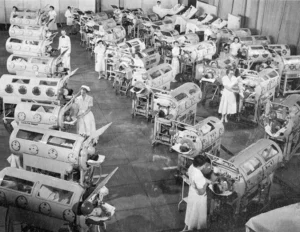When admitted to the hospitals, it is normal for critical patients to be shifted into the intensive care units (ICUs) for adequate health monitoring. However, have you ever thought about ‘how the concept came into being?’ Or ‘What was the series of events which took to the rise of intensive care wards?’ ‘Was it always the same?’ Or ‘did things become more serious with time?’
Harvey Cushing’s Ward Of Intensive Care
It was the 15th of April 1931, when intensive care units and antibiotics were yet to make their mark on the modern medical system. And Harvey Cushing completed his 2000th brain surgery, operating on a 31-year-old patient at Boston, Massachusetts Peter Bent Brigham Hospital.
Regarded as the ‘father of neurosurgery,’ Harvey Cushing, unlike other doctors of his time, took complete care of cleanliness and hygiene while operating on the patients. At Cushing’s Hospital, the mortality rate came down to 8% among patients undergoing brain surgery, which was till now 10% across all other hospitals.

Thanks to Cushing’s post-operative care for individual patients, things became easy. While operating, Cushing used gloves, wore masks and sterilized the wound to his best, reducing the chances of infection. After operating, he took care of the wounds himself – introducing strict observation protocols and record-keeping techniques. At this time, the world also came to witness the introduction of blood pressure monitoring and X-ray machines. Each patient had specially trained staff taking care of them. The entire ward was more like an intensive care unit for patients undergoing operations.
The medical practitioners involved were always careful about the hygiene of the ward. They knew how Cushing would not spare them against complaints from the patients regarding basic hygiene and cleanliness.
However, Cushing’s intensive care units were more like a post-operative care arrangement and inappropriate for the trauma and disease treatment required to cope with an epidemic.
The Rise Of Intensive Care Units
It was the year 1953 that Bjorn Ibsen (an anesthetist) owed the discovery of the first intensive care unit (ICU) in Europe. Wondering what series of events did lead to such an invention? You have the deadly 1952s Copenhagen polio epidemic, which required 300 patients to be under artificial ventilation for multiple weeks owing to the initiative.
As a positive way out, Bjorn Ibsen (‘father’ of intensive care) gathered healthcare specialists – psychologists and physicians to take care of sick patients. He devised the idea of dedicated wards, where each patient had a nurse constantly monitoring the whereabouts.
From Coffin-Like Tanks To The Technique Of Tracheostomy – Looking Into Modern ICUs
100s of seriously ill polio patients were filling up the Blegdam Hospital in the Danish capital of Copenhagen. And the only treatment available was a mechanical respirator, an iron lung. These were the coffin-like tanks, where the patient was made to lie with the head protruding at the top. The casing/coffin, by generating a vacuum, forced the lungs to expand and helped the patient pull the air in. There was an alternative system, which included a dome/shell ventilator attached to the patient’s chest – helping them with the contraction and expansion of the lungs.
However, the number of patients was more compared to the coffin-like tanks and shell ventilators. That is when Bjorn Ibsen suggested that instead of forcing the lungs to expand, one can force air within them using a tube. Doctors cut a hole in the patient’s neck below the larynx through the surgical process and insert a tube directly into the lungs.

The tube was connected to a rubber bag that was pumped by hand. Medical students pumped the bags and monitored the patients. This strategy saved multiple lives and led to the development of the world’s first intensive care units (ICUs).
The Modern Day Intensive Care Units
Post World War II, hospitals and care clinics started taking the concept of ICUs more seriously. As already discussed, the polio disease made the ultimate contribution.
Max Harry Weil is the ‘father of the modern intensive care units.’ he devised the idea of ‘shock wards’ across Los Angeles County in the USA during the early 1960s. Between the 1960s and 70s, the UK saw multiple ICUs. Thus leading to an increase in the number of consultants and junior anesthetists continuously monitoring these wards.
Professor Ron Bradley was the first intensive care clinician to dedicate his full-time medical practice. He took care of the patients admitted to the ICU of London’s St Thomas’ Hospital.
Modern-day hospitals and ICUs thoroughly have the best equipment guaranteeing best of the medical recovery against all diseases. But it was all these past events and initiations by great pioneers who stood firm in scheduling such a great settlement.



